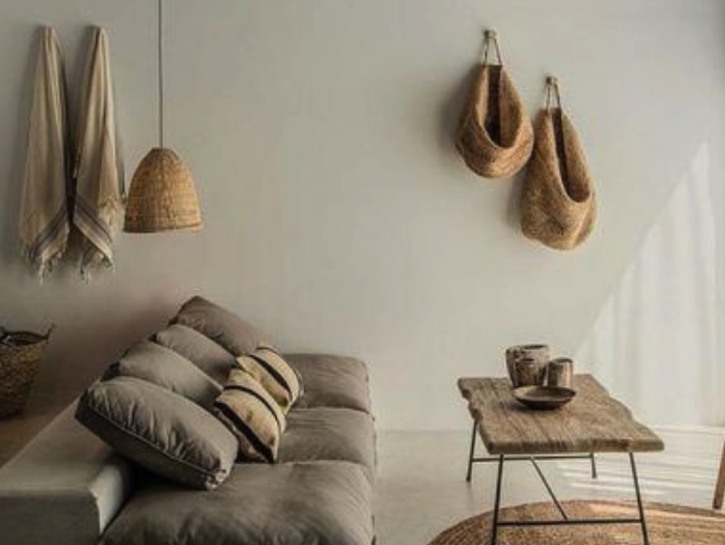Everyone wants their house to be perfect, even you. When it comes to interior design, I’m sure you want your home to be clean, trendy, and aesthetically pleasing. But striving to live in constant perfection can be exhausting. Not only would perfectionism in your home be daunting to achieve, but it can be tiresome in your everyday life as well. Why is it that we’re all striving to have the perfect aesthetic? It’s okay to have imperfections. In fact, there’s a whole Japanese philosophy based around that idea. If you find yourself caught up in materialistic things, I welcome you to the world of wabi sabi.
What is Wabi Sabi?

Finding beauty in imperfection. That’s the trendy Japanese home decor trick of wabi-sabi. “Wabi” translates to living with humility and simplicity while being at one with nature, while “sabi” refers to the ability to accept the lifecycle of anything as it is. This includes any and all flaws. The concept revolves around Japanese legend, Sen no Rikyu, who sought to learn the elaborate customs of the Way of Tea. Rikyu was tested by a tea-master to tend to a garden. He spent time cleaning debris until it was perfect, but before he presented it to the master, he shook a cherry tree. The few flowers that fell to the ground have come to perfectly represent wabi sabi.
So, how do a few flowers that fell on the ground relate to you and decorating your home?

Wabi Sabi For The House
Artisanal homemade style: Wabi sabi is anything and everything that today’s chic, mass-produced, technology-saturated culture isn’t. It’s simplified. It’s minimalistic. And it’s trendy. Wabi sabi celebrates authenticity and uniqueness wherever it can be found. Homemade decor and artisanal accents are the signature mark on authenticity. One of the Japanese-inspired trend’s most important characteristics revolves around enhancing warm, authentic feelings in your space.
Clear out clutter: Wabi sabi may value imperfection, but that does not mean it embraces chaos. Clutter can be a stressor, something that is not welcomed in this Japanese philosophy. A true wabi-sabi home should be free of clutter and highly organized. This will inspire feelings of peace and tranquility, since wabi sabi is essentially about having a sense of order to invite a sense of calm into your home.

Embrace mismatch: When decorating your home, it can be easy to fall down the rabbit hole of color coordinating, matching, and themes. Too much matching, however, can actually diminish the character and welcoming atmosphere of a home and its heart. Wabi sabi isn’t purposely pairing unlike things together, but rather simply being okay with adding something you love to your home, even if it’s not a perfect fit aesthetically. Imperfection is perfection in wabi sabi.
Bring the outdoors in: Elements of nature and natural materials are major components of a wabi-sabi home. They’re known to give off positive vibes. In addition, the natural impurities found in plants, wood, and stone serve as daily reminders of the beauty in imperfection. Integrate wooden furniture, fresh flowers, and as many plants as you want to increase positive zen. If you aren’t the greenest thumb, incorporate succulents and plants that are low maintenance.

Stick to the Basics: Keeping possessions to a minimum by inviting only those things that bring nostalgia, beauty and utility is vital to the art of wabi sabi. This process aims only to keep things that are essential to a calm and happy spirit, an approach that sparks joy in everyday living. So keep the vase that makes you happy, even if it doesn’t fit your aesthetic.
Wabi Sabi For The Soul
Incorporating this Japanese philosophy in your home can spark change throughout your life as well. Wabi sabi encourages its users to focus on the blessings hiding in their daily lives. It celebrates the way things are, rather than how they should be. Richard Powell, author of Wabi Sabi Simple, mentions that the zen approach “appreciates and accepts complexity” while still valuing simplicity. If you look around, you can see it everywhere. That’s wabi sabi. It’s imperfect, impermanent, and most of all incomplete.
